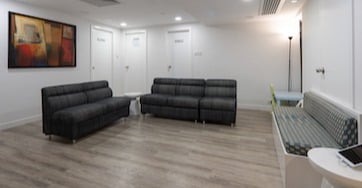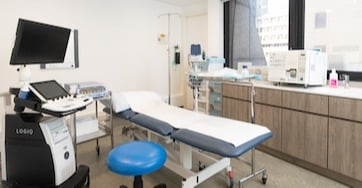Most commonly seen with piercings, a keloid scar is when scar tissues continue to form even after a wound is healed.
During the healing process of a wound, excess scar tissue may form over the injury even after the wound is healed leading to a keloid scar. They usually appear as thick and raised scars which are hard, smooth, and more significant than the size of the initial wound. The keloids may appear red or purple and become brown or pale with time.
Keloid scars can form anywhere skin injuries occur, however they are usually found on one’s earlobes, shoulders, cheeks, and chest. Keloids can form from skin injuries that lead to keloid scars including ear piercings, acne scars, and burns.
How do you identify a Keloid Scar?
Keloid Scars can be difficult to identify initially since they grow very slowly over time. It can take 3 to 12 months before the first symptoms start showing after the wound has healed. While generally harmless to your overall health, keloid scars are usually accompanied by the following symptoms:
- Discomfort or itchiness
- The skin tissue around the wounded area is hardening or thickening after healing
- Pain around the wounded area
- Pink, red or purple discolouration around the area
Who is most likely to get Keloid Scars?
Keloids form most commonly in individuals with previous cases of keloid scarring or if they have a family history of the condition. Other risk factors include:
- Elevated hormones due to pregnancy or puberty
- Latino or Asian descent
- Darker skin tone
- Being younger than 30 years of age
- Past history of mesh skin graft surgery
How do you prevent forming Keloid Scars?
The most crucial aspect in preventing Keloid Scarring is to practice good wound care:
- Ensure that the wounded area is clean and that it is regularly cleaned
- Be gentle about its cleaning process, washing with mild soap and water
- Protect the wound so it doesn't reopen
- Follow your doctor's advice if you have consulted a doctor about the wound
If you are considered to be at risk for developing keloid scars or have a family history of them, be mindful of nonessential surgeries, tattoos, and piercings. Additionally, any injuries to the skin should be protected from excessive sun exposure to avoid discolouration. It is also good to use pressure pads and silicone pads on wounds which can help heal and reduce scarring. Your doctor may also recommend certain moisturising creams to also reduce the risk of keloids forming.
Hypertrophic Scar vs Keloid Scar: The differences
While keloid scars and hypertrophic scars may appear similar, they have key differences in how they form and develop. Both types of scars result from excess collagen production during the healing process, but hypertrophic scars remain within the boundaries of the original wound, whereas keloid scars extend beyond the wound area.
Hypertrophic scars are typically red or pink, raised, and may gradually fade over time. They often develop due to surgical incisions, burns, or other skin injuries. Unlike keloids, hypertrophic scars do not continue growing indefinitely and may improve without treatment.
Keloid scars grow beyond the initial wound site and do not shrink naturally. They are more common in individuals with darker skin tones and have a higher recurrence rate even after treatment.
Treatment for Keloid Scars
Keloids can shrink or flatten on their own without direct treatment. However, if the keloid persists after some time and causes you pain or discomfort, you can treat the condition in several ways. One way is through steroid injections which have been suggested to be effective in reducing the size of recently formed keloid scars. Another way is through cryosurgery, also known as cryotherapy. Cryotherapy is when liquid nitrogen is used to freeze the keloid to remove it. Laser treatment may also be used; however, there is a high chance that the keloid will resurface.
Keloid Scar Removal
For individuals seeking complete keloid scar removal, surgical excision and scar revision is an option. This procedure involves cutting out the keloid and re-orienting the scar (revision), but it carries a high risk of recurrence, especially if not combined with other keloid scar treatments. To minimise regrowth, doctors may recommend combining surgery with steroid injections, radiation therapy, or pressure dressings.
Other removal methods often include laser therapy, which can help flatten and reduce the redness of keloid scars, though it may not prevent them from returning. In some cases, silicone gel sheets and pressure therapy can aid in reducing scar thickness over time.
Reference
1. Mayo Foundation for Medical Education and Research. (2022, April 27). Keloid Scar. Mayo Clinic. Retrieved August 11, 2022, from https://www.mayoclinic.org/diseases-conditions/keloid-scar/symptoms-causes/syc-20520901
2. Nall, R. (2019, June 3). Keloid Scars: Symptoms, Causes, and Treatments. Healthline. Retrieved August 11, 2022, from https://www.healthline.com/health/keloids
3. Keloid and hypertrophic scar. Keloids and hypertrophic scars | DermNet NZ. (n.d.). Retrieved August 11, 2022, from https://dermnetnz.org/topics/keloid-and-hypertrophic-scar
4. WebMD. (n.d.). What Causes Keloid Scars? How to Identify and Treat Them. WebMD. Retrieved August 11, 2022, from https://www.webmd.com/skin-problems-and-treatments/what-to-know-keloid-scars
5. A review of the effects of moisturizers on the ... - Wiley Online Library. (n.d.). Retrieved August 11, 2022, from https://onlinelibrary.wiley.com/doi/full/10.1111/j.1468-2494.2012.00751.x
 Central General Practice
Central General Practice
 Repulse Bay
Repulse Bay
 Clearwater Bay
Clearwater Bay
 Central Specialist Clinic
Central Specialist Clinic
 BodyWorX Clinic
BodyWorX Clinic
 MindWorX Clinic
MindWorX Clinic
 Partner Clinics
Partner Clinics
 Family Clinic
Family Clinic
 OT&P Annerley Midwives Clinic
OT&P Annerley Midwives Clinic
